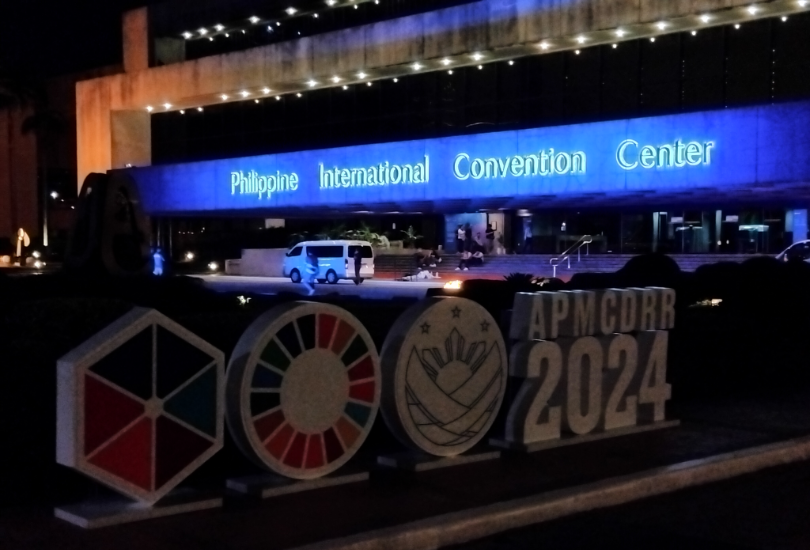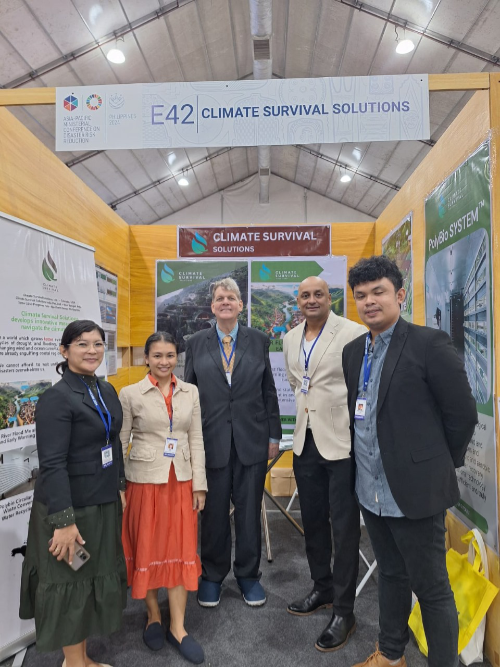Disaster Risk Reduction Conference an Immense Success
ON 01/15/2025 AT 08:36 PMThe presentation and exhibition booth of CSS at the UN's 2024 Asia-Pacific Ministerial Conference on Disaster Risk Reduction (APMCDRR) earlier last month resulted in numerous high quality contacts and inquiries.

Representatives of Climate Survival Solutions recently attended the largest single conference ever held on risk reduction in the face of natural disasters and climate resilience.
The focus of the event was on addressing the Sendai Framework, the 2015 UN agreement which provided for accelerating and enhancing how governments, NGOs, and private enterprises work together to minimize deaths, mass displacement of communities, and destruction from all natural causes. It was held in Pasay City, Philippines, part of the country’s National Capital Region (NCR), at the Philippine International Convention Center (PICC). It was held from October 14-17, 2024.
Global heating, which is contributing to ever more prevalent and powerful typhoons throughout the region, devastating storm surges along the coastlines and extensive inland flooding throughout the Asia-Pacific region, rapid sea level rise, heat waves, and extended periods of drought, was the background for much of the discussions. With the host country this year being the Philippines, which just in August was ranked as the single country most prone to harm caused by natural disasters in the world, additional major natural disaster concerns such as landslides caused by the increasing rainfall, along with increasing seismic activity including volcanic eruptions in parts of the 7,000-island-long archipelago which makes up the country, plus regular earthquakes caused by the country’s bordering on the Pacific Ocean “Ring of Fire”, also took center stage.

The event brought together over 6,000 in-person attendees and thousands more following along live from around the world. Delegates from throughout the Asia-Pacific region spoke on a wide range of topics, including the role of public/private collaboration between national governments and LGUs on one end and private enterprises on the other, how to anticipate and plan for natural disasters to come, and how best to mitigate their effects on people at large.
As one of the relatively small number of delegates offered the opportunity to provide an exhibit booth at the event, Climate Survival Solutions’ (CSS) displays and on-site team based in the Philippines provided critical information on some of the many different means by which it hopes to help communities, LGUs, and other entities meet the increasing needs for climate disaster planning and how to become more resilient in the face of natural disasters.
Among the solutions featured at the event were CSS’s Early Warning Systems to get advance word out on serious flood events regionally, its Smart Agriculture solution to provide real-time monitoring on soil health and other conditions to increase crop yields, its PolybioTM technology using nature-based approaches for blackwater and greywater recycling and integration with aquaponics growing systems, and Climate-Resilient Habitat architectures.
Climate Survival Solutions was also one of only 35 attendees invited to speak at the event. Its paper, entitled, “Navigating the Asian Climate Crisis Using Extreme Weather Warning Systems, Drought Mitigation Methods, and Food Security Tech,” was presented on October 15. It described the Sendai Framework objectives and current state, and how the global team at Climate Survival Solutions is rolling out solutions to help save lives and build climate resilience worldwide.
As part of the plenary events and more, CSS’ team met with a wide range of individuals and institutions on possible collaborative ventures. Those included senior disaster risk reduction officials from throughout the Philippines and all of Asia, stretching from Vietnam, Cambodia, and Laos on one end, to Thailand, Bangladesh, and India on another, and across into the Pacific Islands which are being disproportionately affected by the climate crisis, based on their geographic size and population.

